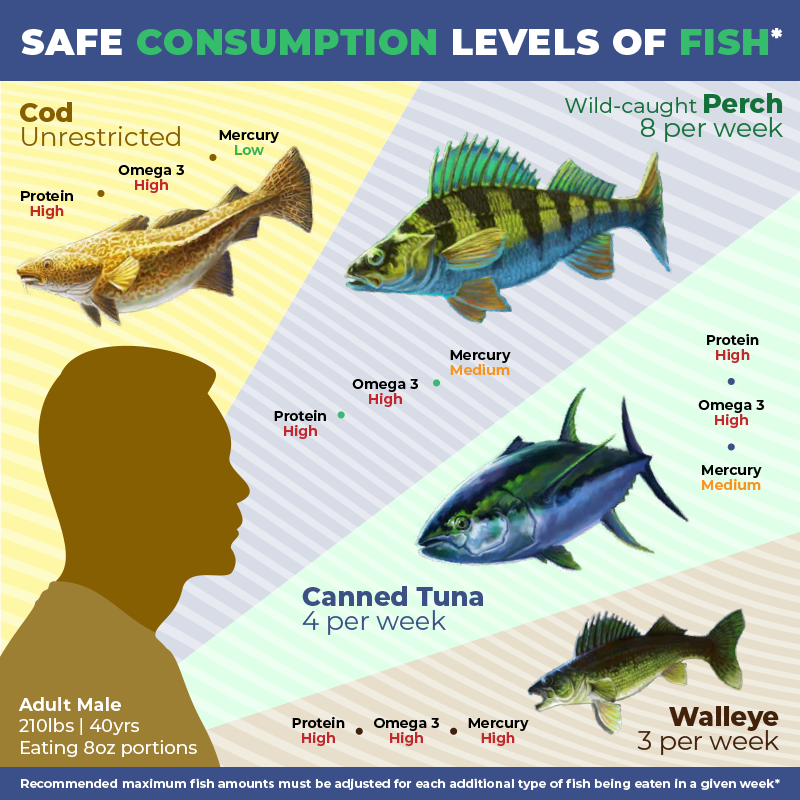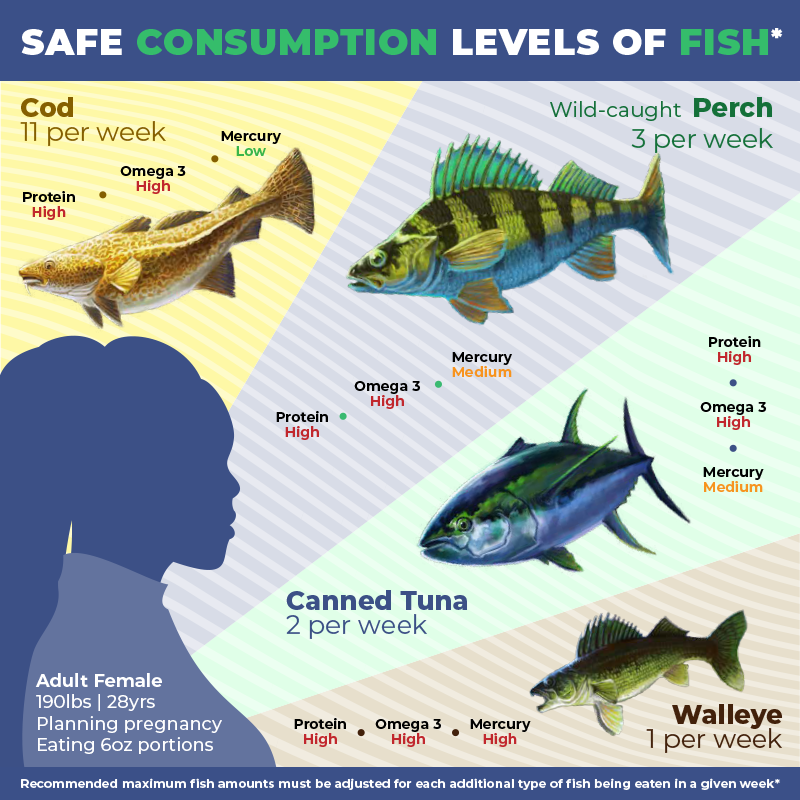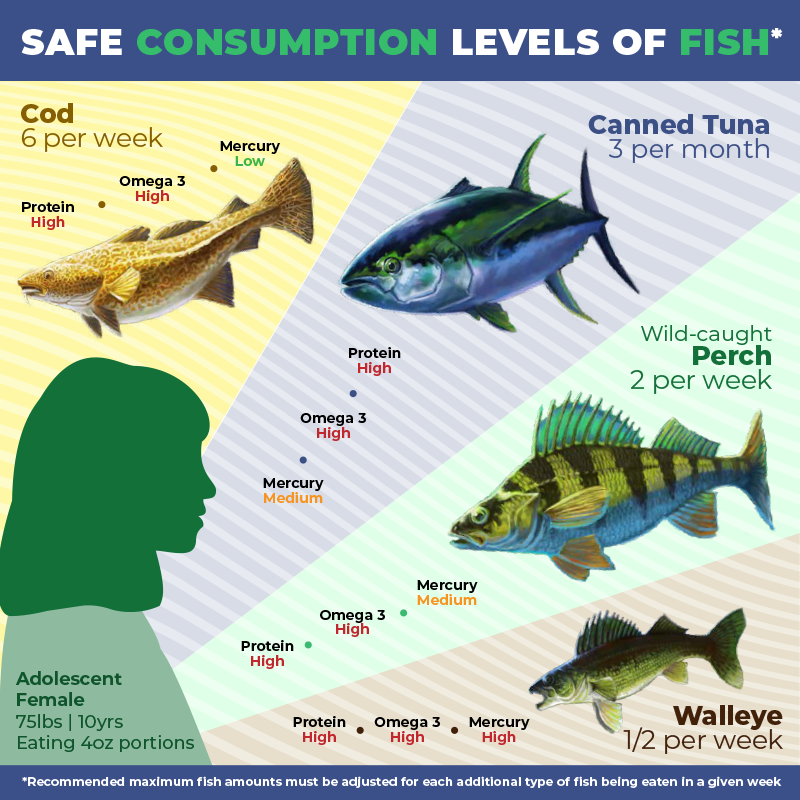Fish Consumption Advisories in Anishinaabe Communities
Eating "Our Fish" Safely
What happens when scientists and indigenous communities work together to promote healthier lifestyles by embracing culture and tradition? For the Anishinaabe communities in the Great Lakes region of the US and Canada, the place of fish as a staple food and fish consumption as a cultural practice have been threatened by common chemical contaminants such as mercury. This has been exacerbated by governmental advisories in the past that were issued to warn individuals about dangers of fish contamination without addressing the unique dietary and cultural significance of fishing and fish consumption in indigenous communities.
Anishinaabe tribes have partnered with national, state and academic groups for years to maintain fish ecosystems, including monitoring possible environmental harm to both fish and indigenous consumers. Matthew Dellinger, PhD, MCW associate professor of epidemiology in the Institute for Health & Humanity, and his team participate in this partnership with the Chippewa Ottawa Resource Authority, the Great Lakes Inter-Tribal Council and the Inter-Tribal Council of Michigan. Dr. Dellinger worked with partners to develop a health literacy software program called Gigiigoo’inaan, which means “our fish” in the Ojibwe language. This program is available on Android and Apple devices and informs users about the safest fish to consume in the upper Great Lakes region (Superior, Michigan and Huron). It also provides guidance on how much can be safely eaten based on age, gender and weight.
The app also encourages the consumption of fish that have the most health benefits – such as fish with high levels of Omega-3 fatty acids – and provides recipes. Giggigoo’inaan was designed to evoke cultural familiarity through using Ojibwe names for the fish traditionally consumed in indigenous cultures and art by Dr Dellinger made in the Woodland Style founded by the Anishinaabe artist Norval Morrisseau. More than 200 members of Anishinaabe tribes participated in an eight-week study of the Gigiigoo’inaan app. The findings reported in April 2022 in Environmental Research indicate that use of the app encourages a safe level of fish consumption. The results of the research conducted by Dr. Dellinger demonstrate the potential of community-engaged solutions that use traditional messaging and images as tools for enhancing environmental health literacy.
Environmental health literacy is a significant area within the field of public health that emphasizes education that empowers people to prevent disease by better understanding their environment. This can include encouraging active steps to heal their environment and/or changing dietary and other habits to reduce negative health effects from their environment
Research and Fish Art by Dr. Matthew Dellinger
Infographic by Marquayla Ellison, Ellastic Designs, LLC
The authors thank the tribal fishing families, the Sault Ste Marie Tribe, Inter Tribal Council of Michigan, and the Chippewa Ottawa Resource Authority (CORA) who have dedicated two decades of work to collecting these data. Also, the Great Lake Native American Research Center for Health for additional support and networking. This work is funded by the National Institute for Environmental Health Sciences.
(Grant #: 5R01ES028255-03) and CORA Environmental health literacy for Anishinaabe (Great Lakes Native American) fish consumers: A randomized control trial
Download Maximum Fish Consumption Amount Infographics
View recommended maximum fish amounts for an adult male

Male | 210 lbs. | 40 years | Eating 8 oz. portions
Download Safe Consumption Levels of Fish for an Adult Male (PDF)
View recommended maximum fish amounts for an adult female

Female | 190 lbs. | 28 years | Eating 6 oz. portions | Planning pregnancy
Download Safe Consumption Levels of Fish for an Adult Female (PDF)
View recommended maximum fish amounts for an adolescent (female)

Child | 75 lbs. | 10 years | Eating 4 oz. portions
Download safe consumption levels of fish for an adolescent female (PDF)
Gigiigoo’inaan App in the Media
-
Interview
Iron Mountain Daily News. Study: App for Anishinaabe to track fish consumption works, November 28, 2020.
Learn More -
NIEHS PEHP Newsletter
App Provides Culturally Tailored Fish Consumption Guidelines to Anishinaabe. Volume 13, Issue 11: November 2022.
Learn More -
MI Public Television
2023. Study: App for Anishinaabe to track fish consumption works. The Catch - Great Lakes Now - Episode 2301 - Segment 3.
Learn More -
EPA
2023. Application Developed with Indigenous Communities Fosters Safe Fish Consumption. Fish and Shellfish Program Newsletter January 2023. 823N21003
Learn More

